3,3',4,4'-Biphenyltetracarboxylic dianhydride
Synonym(s):s-BPDA
- CAS NO.:2420-87-3
- Empirical Formula: C16H6O6
- Molecular Weight: 294.22
- MDL number: MFCD00039140
- EINECS: 219-342-9
- SAFETY DATA SHEET (SDS)
- Update Date: 2025-12-23 21:30:31
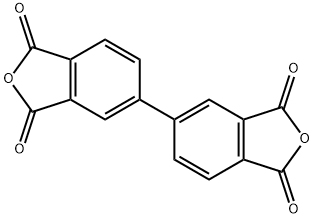
What is 3,3',4,4'-Biphenyltetracarboxylic dianhydride?
Chemical properties
BPDA (3,3',4,4'-Biphenyltetracarboxylic dianhydride) is a raw material for the polyimide resin component of one of the super-engineering plastics. It is used for many important information and electronic technology products such as mobile phones and copying machines.
The Uses of 3,3',4,4'-Biphenyltetracarboxylic dianhydride
3,3',4,4'-biphenyltetracarboxylic dianhydride be used for the preparation of a polyimide material.
The Uses of 3,3',4,4'-Biphenyltetracarboxylic dianhydride
s-BPDA can be used in the synthesis of high molecular weight aromatic polyamide fibers. It can also be used in the formation of hybrid nanocomposite films.
Preparation
The preparation of 3,3',4,4'-Biphenyltetracarboxylic dianhydride is as follows:In a nitrogen atmosphere, add N-(3-N,N-dimethylamino-propyl)-4-chlorophthalimide (26.65g, 0.1moL),Zinc powder (3.25g, 0.05moL), anhydrous NiCl2 (127.5mg, 1mmoL),Triphenylphosphine (250mg, 1mmoL) and 70 mL of anhydrous DMAc were stirred at 50°C for 24 hours, and 55mL of solvent DMAc was recovered under reduced pressure. Add 80g of xylene to the system and reflux (recrystallize), filter out the inorganic matter, the clarified filtrate will be cooled and precipitated, filtered, and vacuum dried for 10 hours. 21.8g of 3,3',4,4'-biphenylbisimine was obtained with a yield of 94%. In a 100mL reaction flask, add 4.62g (0.01mol) of the above 3,3',4,4'-biphenylbisimine and 9g of 20% sodium hydroxide aqueous solution, and heat to reflux for 24 hours. Filter and adjust pH=1 with concentrated hydrochloric acid to obtain 3,3’,4,4’-biphenyltetracarboxylic acid. After filtering, wash with water three times and reflux with water with 20mL trimethylbenzene.2.85g of white 3,3′,4,4′-biphenyltetracarboxylic dianhydride was obtained, the yield was 97%.

What are the applications of Application
3,3′,4,4′-biphenyltetracarboxylic dianhydride (BPDA) and 3,3′- and 4,4′-diaminodiphenylsulfones enable to prepare homo- and copolyimides. 3,3',4,4'-Biphenyltetracarboxylic dianhydride is commonly employed to synthesized the aromatic polyimide fibers which is one member of high performance fibers with high strength, high modulus, high and low temperature resistance, and radiation resistance. BPDA could be used to synthesize a series of hyper-cross-linked polymers (HPB-s) with waste polystyrene (WPS) foam. HPB-s has promising potential in purifying dye wastewater[1-2].
General Description
3,3′,4,4′-Biphenyltetracarboxylic dianhydride (s-BPDA) is a rigid symmetric polyamide with a diamine having a long distance between amine groups and reactive endgaps.
Flammability and Explosibility
Non flammable
Advantages
1.Excellent thermal stability
2.Good chemical resistance
3.Stable mechanical properties
4.Polyimide does not require the addition of flame retardants to prevent combustion.
References
[1] Zhao M, et al. Porous Adsorbents Cross-Linked with Waste Polystyrene Foam and 3,3′,4,4′-Biphenyltetracarboxylic Acid Dianhydride for the Effective Removal and Enrichment of Cationic Dyes. ACS Applied Polymer Materials, 2023.
[2] Zhang Q, et al. Morphology of polyimide fibers derived from 3,3′,4,4′-biphenyltetracarboxylic dianhydride and 4,4′-oxydianiline. Journal of Applied Polymer Science, 2004; 93: 669-675.
Properties of 3,3',4,4'-Biphenyltetracarboxylic dianhydride
| Melting point: | 299-305 °C (lit.) |
| Boiling point: | 614.9±48.0 °C(Predicted) |
| Density | 1.625±0.06 g/cm3(Predicted) |
| vapor pressure | 0Pa at 20℃ |
| storage temp. | Inert atmosphere,Room Temperature |
| solubility | almost transparency in hot DMF |
| form | powder to crystal |
| color | White to Green to Brown |
| λmax | 300nm(lit.) |
| InChI | InChI=1S/C16H6O6/c17-13-9-3-1-7(5-11(9)15(19)21-13)8-2-4-10-12(6-8)16(20)22-14(10)18/h1-6H |
| CAS DataBase Reference | 2420-87-3(CAS DataBase Reference) |
| NIST Chemistry Reference | 3,3',4,4'-Biphenyltetracarboxylic acid dianhydride(2420-87-3) |
| EPA Substance Registry System | [5,5'-Biisobenzofuran]-1,1',3,3'-tetrone (2420-87-3) |
Safety information for 3,3',4,4'-Biphenyltetracarboxylic dianhydride
| Signal word | Warning |
| Pictogram(s) |
 Exclamation Mark Irritant GHS07 |
| GHS Hazard Statements |
H315:Skin corrosion/irritation H319:Serious eye damage/eye irritation H335:Specific target organ toxicity, single exposure;Respiratory tract irritation |
| Precautionary Statement Codes |
P261:Avoid breathing dust/fume/gas/mist/vapours/spray. P264:Wash hands thoroughly after handling. P264:Wash skin thouroughly after handling. P271:Use only outdoors or in a well-ventilated area. P280:Wear protective gloves/protective clothing/eye protection/face protection. P302+P352:IF ON SKIN: wash with plenty of soap and water. P305+P351+P338:IF IN EYES: Rinse cautiously with water for several minutes. Remove contact lenses, if present and easy to do. Continuerinsing. |
Computed Descriptors for 3,3',4,4'-Biphenyltetracarboxylic dianhydride
| InChIKey | WKDNYTOXBCRNPV-UHFFFAOYSA-N |
| SMILES | C1(=O)C2=C(C=C(C3C=CC4C(=O)OC(=O)C=4C=3)C=C2)C(=O)O1 |
New Products
Indole Methyl Resin tert-butyl 9-methoxy-3-azaspiro[5.5]undecane-3-carboxylate Boc-His(Boc)-OH 2-CTC Resin 4-Chloro-7-tosy1-7Hpyrrolo[2,3-d]pyrimidine 5,7-Dibromo-1H-indole 2,5-dichloro-N-hydroxy-4,6-dimethylpyridine-3-carboximidamide 2,2-Dimethoxy-7-azaspiro[3.5]nonane hydrochloride 4-chloromethyl-5-methyl-1,3-dioxol-2-one (DMDO-Cl) R-2-BENZYLOXY PROPIONIC ACID 1,1’-CARBONYLDIIMIDAZOLE 1,1’-CARBONYLDI (1,2-4 TRIAZOLE) N-METHYL INDAZOLE-3-CARBOXYLIC ACID 4-((2-hydroxyethyl)thio)benzoic acid 1-(TERT-BUTOXYCARBONYL)-2-PYRROLIDINONE Methyl 6-methylnicotinate 3-Pyridineacrylic acid tert-Butyl carbazate TETRAHYDRO-2H-PYRAN-3-OL 2-((4-morpholinophenylamino) (methylthio) methylene) malononitrile 3-(4-morpholinophenylamino)-5-amino-1H-pyrazole-4-carbonitrile 2,4-dihydroxybenzaldehyde 1,3-Diethyl-1,3-Diphenylurea Methyl 2-methylquinoline-6-carboxylateRelated products of tetrahydrofuran
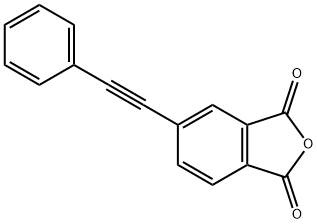
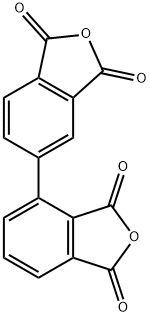
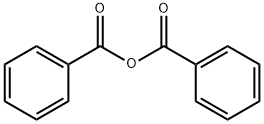

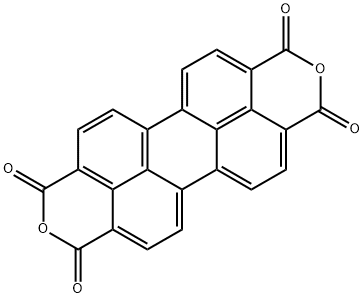
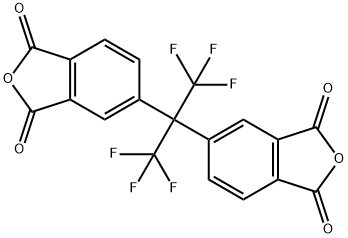
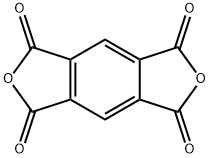

You may like
-
 4,4'-Biphthalic Anhydride CAS 2420-87-3View Details
4,4'-Biphthalic Anhydride CAS 2420-87-3View Details
2420-87-3 -
 4,4'-Biphthalic Anhydride (purified by sublimation) CAS 2420-87-3View Details
4,4'-Biphthalic Anhydride (purified by sublimation) CAS 2420-87-3View Details
2420-87-3 -
 3,3′,4,4′-Biphenyltetracarboxylic dianhydride CAS 2420-87-3View Details
3,3′,4,4′-Biphenyltetracarboxylic dianhydride CAS 2420-87-3View Details
2420-87-3 -
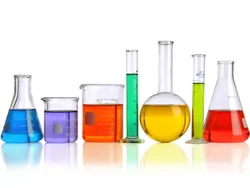 4,4'-Biphthalic anhydrideView Details
4,4'-Biphthalic anhydrideView Details
2420-87-3 -
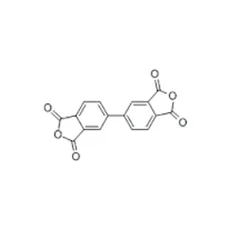 3,3',4,4'-Biphenyltetracarboxylic dianhydride, BPDAView Details
3,3',4,4'-Biphenyltetracarboxylic dianhydride, BPDAView Details
2420-87-3 -
 Pyridine 99.5% HPLC /UV SpectroscopyView Details
Pyridine 99.5% HPLC /UV SpectroscopyView Details
110-86-1 -
 Dibutyl PhthalateView Details
Dibutyl PhthalateView Details
84-74-2 -
 Thiourea 99% ARView Details
Thiourea 99% ARView Details
62-56-6
